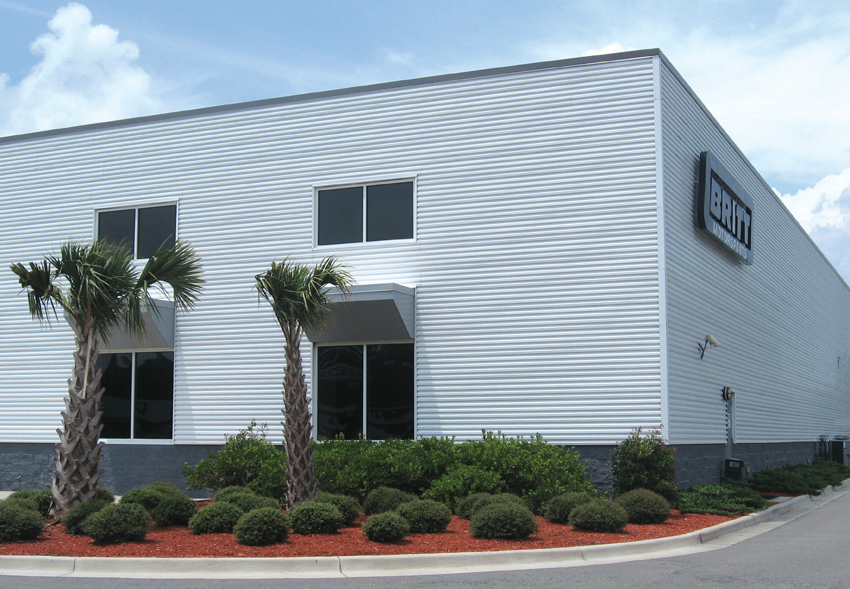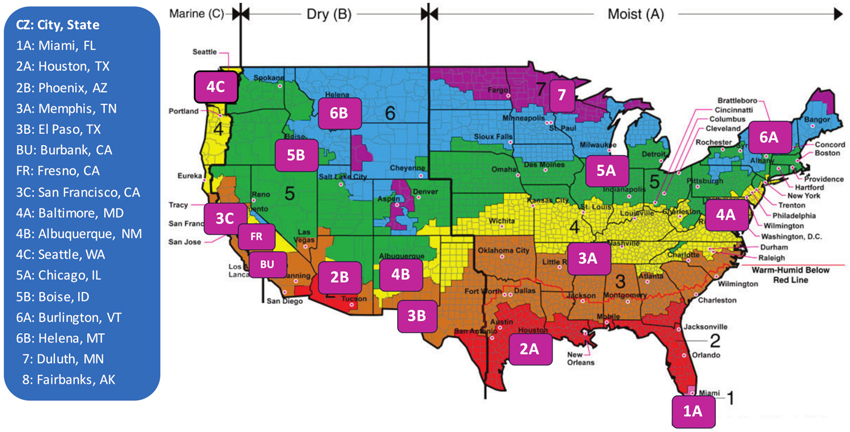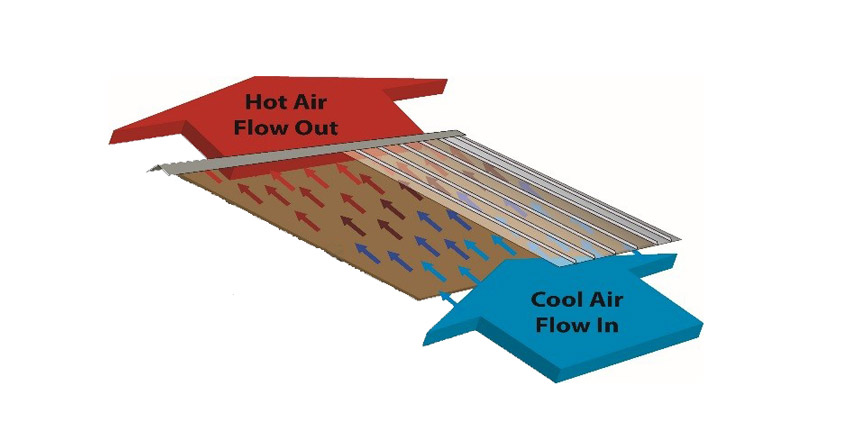Innovative Technologies for Sustainable Building Envelopes
The Potential for Cool Walls Should Not Be Overlooked
A study of cool walls by scientists at the U.S. Department of Energy’s Lawrence Berkeley National Laboratory (Berkeley Lab) was based on models of different types and ages of homes, office buildings, and retail stores in locations throughout California and the United States.4

While cool roofs have rightly become intelligent strategies to keep buildings cool and to prevent the urban heat island effect, cool walls have gotten less attention than they should. In fact, cool metal walls can deliver significant energy-saving benefits.
The study, titled “Potential benefits of cool walls on residential and commercial buildings across California and the United States: Conserving energy, saving money, and reducing emission of greenhouse gases and air pollutants,” was published in 2019 in the journal Energy and Buildings.5
The findings indicate that in many locations, sunlight-reflecting cool exterior walls can save as much or more energy than sunlight-reflecting cool roofs. And these cool walls can help mitigate the urban heat island effect.
For the project, the scientists studied more than 100,000 building simulations. Berkeley Lab maintains a separate Heat Island Group that explores the increase in outdoor urban air temperatures stemming from the concentration of buildings, roads, and other structures that absorb heat, and it studies methods to minimize the problem.

Source: Solar-Reflective “Cool” Walls: Benefits, Technologies, and Implementation, Appendix P, California Energy Commission.
Cool walls create multiple benefits in California and the southern part of the United States.
Based on the models for warm U.S. cities from Miami, Florida, to Albuquerque, New Mexico, researchers found that cool walls could lead to annual heating, ventilation, and air-onditioning (HVAC) energy cost savings up to:
- 11 percent for stand-alone retail stores;
- 8.3 percent for single-family homes;
- 4.6 percent for medium-sized office buildings; and
- 4–27 percent for single-family homes in all of California.
The researchers discovered that cool walls offer reductions in annual emissions of nitrogen oxides, sulfur dioxide, and greenhouse gases such as carbon dioxide. In addition, cool walls lower peak demand for electric power, which is an increasingly important factor in sustainability goals for green developments.
Ronnen Levinson, leader of the Berkeley Lab’s Heat Island Group and co-author of the study, was quoted as saying: “Cool walls provide energy cost savings and emission reductions across California and the southern half of the United States. In these climates, cool walls can save as much or more energy than the same-size cool roof.” The reason, he explained, is that while walls receive less intense sunlight than roofs, they are also less insulated.
LEED v4: Potential Contribution of Metal Roofing and/or Walls
- Integrative Process (1 point)
- Heat Island Reduction (up to 2 points)
- Rain Water Management (up to 2 points)*
- Outdoor Water Use Reduction (up to 2 points)*
- Indoor Water Use Reduction (up to 6 points)*
- Minimum Energy Performance (prerequisite)
- Optimize Energy Performance (up to 18 points)
- Building Life-Cycle Impact Reduction (up to 5 points)
- Thermal Comfort (1 point)
*Note that metal roofing is an ideal choice for rainwater harvesting applications. The water collected can be used for outdoor use in landscape irrigation, and for indoor use in a building’s greywater system
Above-Sheathing Ventilation (ASV)
Another simple, passive technology for cool roofs that exploits the forces of nature is above-sheathing ventilation (ASV). This cool roof installation method creates an airspace between a roofing panel and the deck to allow airflow to exit at the rooftop.

An airspace between the roof deck and the panels creates a path for hot air to rise and escape.
It is interesting to note that in studies, when a 4-inch offset is created between the panel and the deck, the attic temperatures never exceeds peak daytime outdoor temperatures.
However, even smaller airspaces can achieve a significant reduction of heat transfer into the building. In fact, California’s Title 24 currently defines a 1-inch airspace as a standard for determining cool roof ratings, regardless of the color chosen.
ASV is achieved with the use of spacer shims, many of which are designed to be stackable and to provide ventilation spaces in increments, or by creating secondary framing between the primary structure and the roof covering. ASV shims are easy to install between the roof deck and the metal panels, creating offset to ensure continuous airflow between the roof sheathing and the metal panel system. Outside air enters at the eve, is heated, and flows up and out at the ridge, thereby minimizing the effect of condensation between the roof layers.
ASV creates energy savings by reducing air-conditioning costs in the summer and adding insulation value during the winter. In effect, ASV negates heating penalties associated with cool roofing in northern climates by using the airspace as extra insulation.
Research proves the effectiveness of ASV. After testing, the Oak Ridge National Laboratory (ORNL) stated that ASV combined with a cool metal roof can reduce heat gain by up to 45 percent.6 ORNL showed that ASV can produce the equivalent of 0.15 solar reflectance gain and can significantly reduce roofing temperatures so that attic temperatures do not exceed the peak daytime outdoor air temperature.
A variety of ASV profiles of manufactured panels are available that incorporate ASV technology. The combination of product design and installation method naturally creates an airspace beneath the roofing.
ASV can also be created in retrofits when metal roofing is installed over the previous roof system. In addition, new commercial and residential roofing projects can include ASV by specifying an appropriate air gap.
Standards and ASV
Standards back ASV as an effective energy-saving technology. Title 24 California Building Standards Section 152 and NAHB Green Building Standard Chapter 7 state that a roof installed with an appropriate air gap is considered equivalent to the prescriptive definition of a cool roof (cool pigment on metal roof) regardless of its solar reflectance.
Title 24 California Building Standards:
- Section 152, Energy Efficiency Standards for Additions and Alterations in Existing Buildings that will be Low-Rise Residential Occupancies Alterations
- Equivalence: Insulation with a thermal resistance of at least 0.85 hr-ft2-ºF/Btu [R-Value = 0.85] or at least a 1-inch airspace is added to the roof deck over an attic
NAHB Green Building Standard:
- Chapter 7, Energy Efficiency, Section 704.3.1.3 Passive Cooling Design
- 1 point if “roofing material is installed with a minimum 3⁄4-inch (19-millimeter) continuous airspace offset from the roof deck from eave to ridge”









